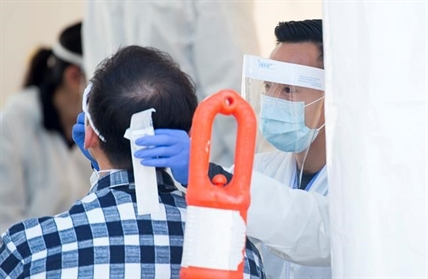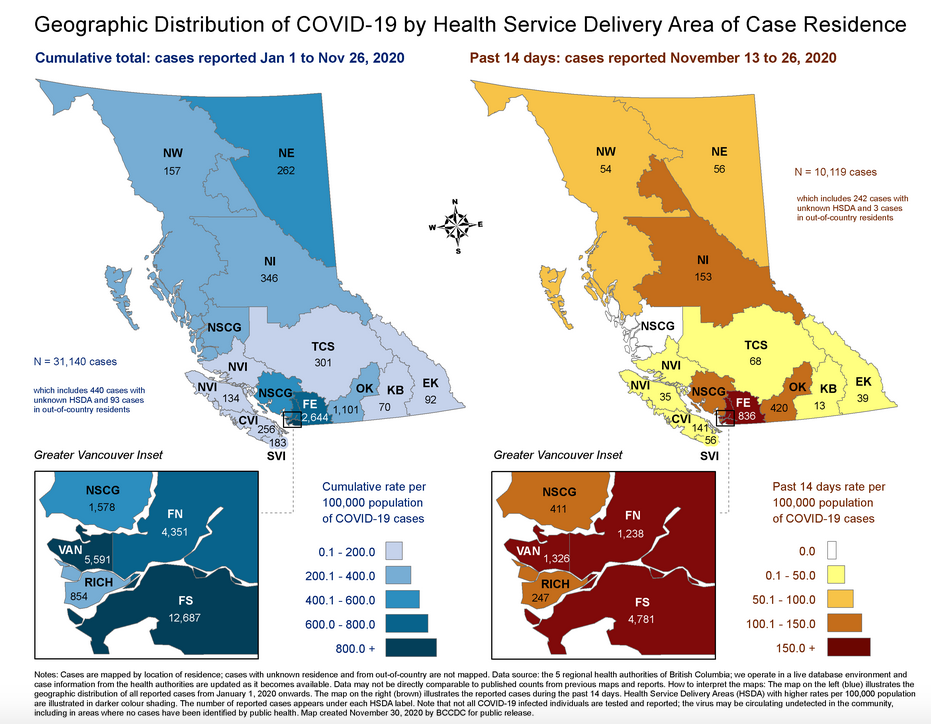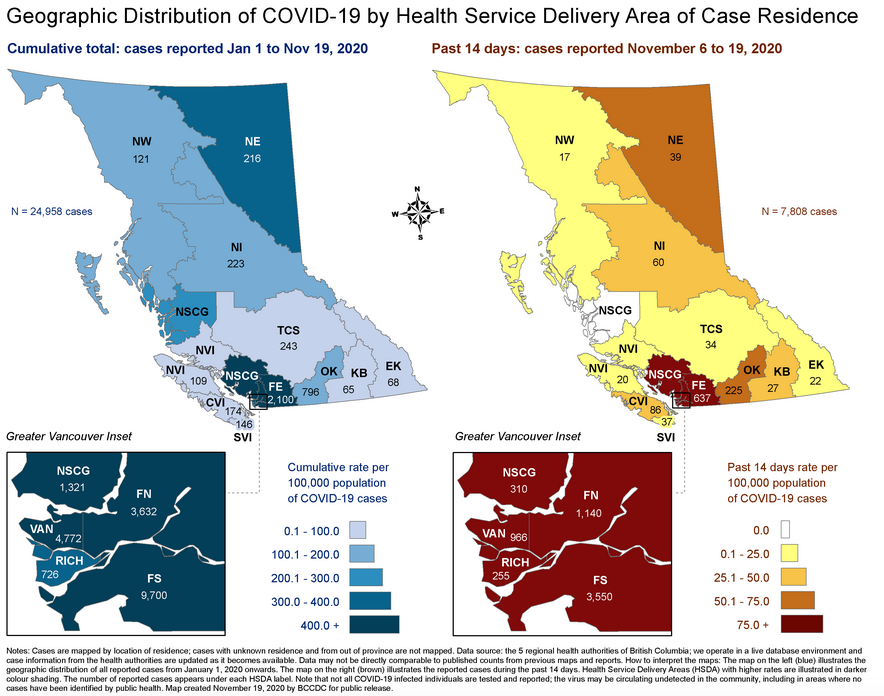Elevate your local knowledge
Sign up for the iNFOnews newsletter today!

While the focus on increased COVID-19 cases in B.C. in recent weeks has been on the Fraser South region of the Lower Mainland, the latest data shows the virus is moving into other parts of the province at increasing speed.
“This virus is in our community around the province,” provincial health officer Dr. Bonnie Henry said during a news conference yesterday, Nov. 30.
She announced 46 new deaths from the weekend yesterday, although the number of daily cases dropped from a record one day high of 911 on Friday.
“I know that I have heard issues around people traveling, whether it’s for work or recreational travel, and they bring the virus back with them. Things that we should not be doing right now," she said. "We know that it’s associated with gatherings, even small gatherings where people are coming together and thinking it’s OK, but it spreads to those who are in your family, in your household and that is what we need to pay attention to right now.”
READ MORE: B.C. has staggering 46 COVID-19 deaths since Friday; 2,364 new cases
Data published by the B.C. Centre for Disease Control each week shows the number of cases in each subregion (Health Service Delivery Areas) of the province over the previous two weeks.

The total number of cases increased significantly from 7,425 for the Nov. 6 to 19 time period to 9,874 from Nov. 13 to 26, a jump of 2,449 cases.
While the vast majority continue to be in the Fraser South region, which includes Surrey, White Rock, Delta and Langley, with 1,528 new cases, there were some significant shifts into other areas of the province.
Cases in Fraser East (Abbotsford to Hope) jumped by 199 to 836, and the North Shore/Coast Garibaldi subregion jumped by 99 to 411.
The Northern Health region saw an 147-case increase to 263 and even the low numbers on Vancouver Island jumped by 82 to 232, which included a case in the Ministry of Health building.
“There’s a sense in parts of the province that we are maybe not going to be exposed to this virus, but it reminds us that it does travel and it travels with people,” Dr. Henry said. “We are now seeing cases on Vancouver Island, when there was a sense of complacency. We’ve seen this many times around the province."
In the Interior, the number of cases doubled in the Thompson/Cariboo/Shuswap subregion to 68. That includes 22 new cases in Revelstoke, which is included in that subregion. Prior to this, there had only been three cases in the Revelstoke Local Health Area since the pandemic began.
READ MORE: UPDATE: Interior Health reports community cluster in Revelstoke; 22 new COVID-19 cases
The case load also almost doubled in the Okanagan from 225 to 420. The Kootenays recorded an increase of just three cases to 52.
The only relatively bright spot in the province was Richmond where the number of cases in the most recent two week period actually dropped by eight to 247.

The updated mapping also shows that almost 20,000 of the province’s roughly 30,000 cases up to Nov. 26 were in the Fraser Health region, including 12,687 in Fraser South.
By contrast, the Interior Health region had a total of 1,564 cases with 1,101 in the Okanagan
To contact a reporter for this story, email Rob Munro or call 250-808-0143 or email the editor. You can also submitphotos, videos or news tips to the newsroom and be entered to win a monthly prize draw.
We welcome your comments and opinions on our stories but play nice. We won't censor or delete comments unless they contain off-topic statements or links, unnecessary vulgarity, false facts, spam or obviously fake profiles. If you have any concerns about what you see in comments, email the editor in the link above.
Want to share your thoughts, add context, or connect with others in your community?
You must be logged in to post a comment.